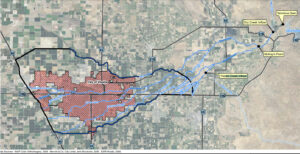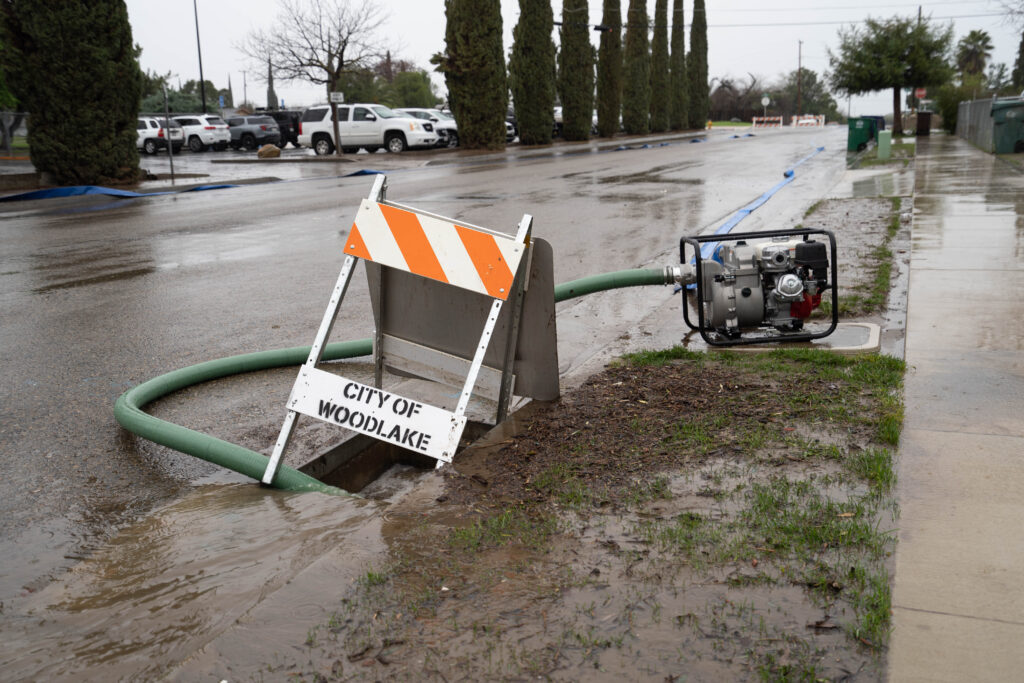Water managers along the Kaweah River system have been frantically maintaining waterways as high flows continue chugging through the system. But even as snowmelt begins and flows increase, there isn’t a risk of flooding yet, according to state officials.
The Kaweah River flows from Lake Kaweah through Terminus Dam. Below the dam, it has multiple branches, including the St. Johns River, which flows west through Visalia. Other branches cut a little further south before also heading west.
Like most southern San Joaquin Valley rivers, the Kaweah and its multiple branches overflowed during the string of storms in March.
Levees failed and water moved wherever it wanted to go, said Shane Smith, general manager of Kaweah Delta Water Conservation District. It’s a learning process for Smith and his staff.
“We really haven’t had flows like this before,” said Smith. “Most of the people that have seen this are so old that they’re retired.”
The district oversees 340,000 acres of land in the Kaweah River system. It has 40 basins including groundwater recharge and stormwater basins. The district is moving floodwater to those basins but staff have to be cautious about where they put water because not all infrastructure can handle high flows, said Smith.
“We have to be careful that we’re not spreading water through irrigation channels because those are typically not designed to take the higher flows,” said Smith. “But the reality is that there were multiple breaches, multiple levee breaks all throughout the district and that water was flowing wherever it wanted to go. That’s why there was so much flooding that happened.”
More basins and increasing the capacity of Lake Kaweah would help, said Smith.
“We’re talking perfect world here,” said Smith. “But the reality is, that wasn’t something that we needed in this area.”
District staff are still learning from this season when it comes to what is needed to better manage extreme flood years, said Smith.
Outflow from Terminus Dam on Tuesday was 3,500 cubic feet per second. Temperatures in the valley are expected to soar this week well into the 90s which will start to melt the historic snowpack in the Kaweah watershed.
There is about 800,000 acre feet of water content in the Kaweah watershed that is expected to flow down over the coming months, said Smith. Kaweah Lake can hold 185,000 acre feet. The district is working with the Army Corps of Engineers to control releases every day in preparation for increased snowmelt. 
“Right now we are doing everything we can to put water in every hole that we can find and keep it in the channels that we have it in,” said Smith.
Despite coming high temperatures, there are no expectations of flooding this week, said Michael Anderson, state climatologist for the Department of Water Resources, in a media briefing on Monday.
There will eventually be a risk of channel capacities being exceeded again, but because of reservoir management that shouldn’t happen yet, he said.
Share this:
- Click to share on Facebook (Opens in new window)
- Click to share on Twitter (Opens in new window)
- Click to share on LinkedIn (Opens in new window)
- Click to share on Reddit (Opens in new window)
- Click to share on Tumblr (Opens in new window)
- Click to share on Pinterest (Opens in new window)
- Click to share on Pocket (Opens in new window)
- Click to share on Telegram (Opens in new window)
- Click to share on WhatsApp (Opens in new window)
- Click to print (Opens in new window)









You must be logged in to post a comment.